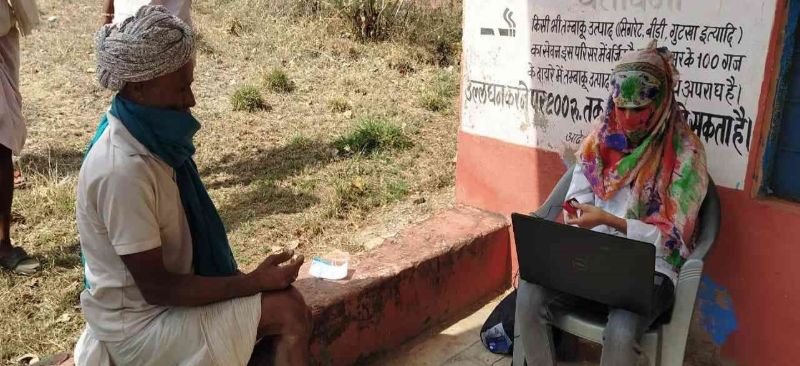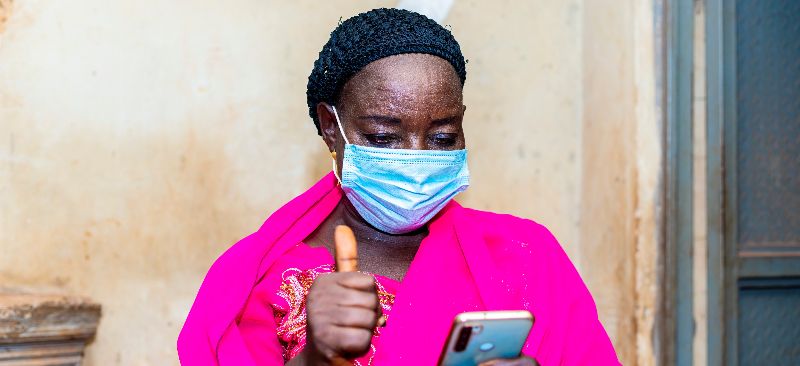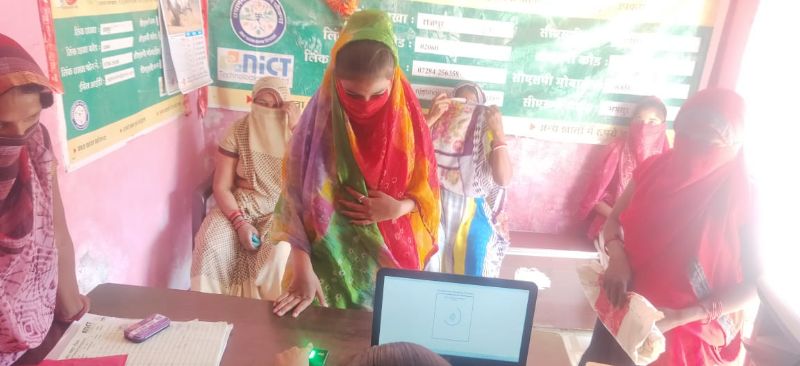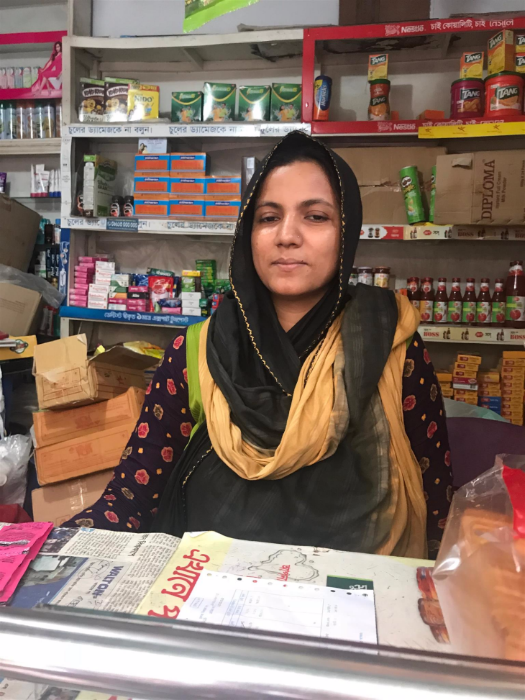The COVID-19 pandemic has put the spotlight on India’s frontline healthcare workers and highlighted the need to provide them with infrastructural support and resources to ultimately strengthen the country’s healthcare system. Accredited Social Health Activists or “ASHAs” are one such critical link in India’s efforts to ensure last-mile delivery of healthcare services. ASHAs are informal frontline healthcare workers at the grass-root level, who ensure effective and efficient implementation of government healthcare programs. They have acted as foot soldiers in the country’s battle to contain the spread of COVID-19.
However, ASHAs have long faced multiple challenges in executing their essential tasks, and these were exacerbated during the pandemic, according to our research. Still, they remained committed to their cause. “Working during the lockdown has been tough but irrespective of the situation, I always stand with people during their emergencies,” said one ASHA worker from the eastern Indian state of Odisha.
India has nearly 1 million ASHAs spread across almost all states and union territories. The country’s National Health Mission envisages having at least one trained ASHA in every village. Her role is to increase the utilization of public health services, such as by helping organize immunization drives, community mobilization, and escorting pregnant women to government healthcare centers for free checkups and deliveries.
When the pandemic struck, ASHAs had to balance their usual tasks with new responsibilities related to the pandemic.
To understand the impact of COVID-19 on the ASHAs and routine healthcare government services, we surveyed ASHA workers and beneficiaries in the rural areas of three states that lag in public health indicators—Uttar Pradesh, Odisha, and Bihar. The survey was conducted over the phone, between June and July, and respondents shared their experiences since the start of the pandemic earlier in the year.
The struggle to provide basic healthcare to communities
In the early months of the pandemic, many services related to reproductive, maternal, neonatal, and child healthcare—a key focus area of India’s healthcare program—were disrupted. The trigger for these disruptions was a nationwide lockdown that came into effect in late March to curb the spread of the novel coronavirus. In some instances, public healthcare centers were shut. ASHAs we spoke to reported that doctors and other medical staff could not reach these centers due to restrictions on transport and movement. “A pregnant woman came to me many times to get her ultrasound done but I could not help her as nothing was open,” said one ASHA worker from Bihar.
Many public healthcare centers were repurposed as COVID-19 facilities. In our survey, 71% of ASHA workers said that existing resources had been reallocated for COVID-19, and 66% said that this reallocation hurt routine healthcare services. Meanwhile, people were also wary of going to the health centers as they were afraid of contracting COVID-19.
The lack of transportation was another obstacle to accessing public healthcare. Typically, ASHAs use government ambulances to ferry expecting mothers. Yet ambulances were difficult to find as many had been diverted to be used for COVID-19 patients. Privately-run transport services were few and costly and thus posed as a barrier to healthcare access. In Uttar Pradesh, one ASHA said she was denied an ambulance for a pregnant woman, so the delivery was done at home. “I took care of the mother for nine months but in the end, it was all in vain,” she rued. Neither could the ASHA facilitate an institutional delivery nor did she earn any incentive for it.
In our poll, 63% of ASHAs said that antenatal care was not provided in April and May, though it resumed in June. Around half the ASHAs reported a decrease in “home-based newborn care” because families feared getting infected. A third of ASHA workers surveyed said that routine immunization services were affected, and a third also said that family planning services like sterilization were not available to women who wanted it. Disruptions in service not only inconvenienced the public but also hurt ASHA workers economically.
ASHAs do not get a salary and are instead paid incentives to perform certain services. For instance, they may get INR 100 in rural areas to bring an expecting mother to the local healthcare center for a checkup as part of antenatal care. Or, she may be given INR 300 to facilitate delivery in the hospital rather than at home. With services disrupted, incentive payments fell. Around half of the ASHAs reported a decrease in incentives tied to antenatal care, while 56% said that incentives for immunization reduced. Before the pandemic, ASHAs historically earned an average of INR 2,000 to INR 6,000 (USD 27 to USD 80 ) a month, depending on the state. “That is not enough,” said one ASHA worker from Odisha.
Moreover, ASHA workers faced delays in getting payments and when the money did come, they often did not know what they were being paid for. The inability to track the claims submitted by ASHAs has been a persistent challenge for them.
Foot soldiers in the battle against COVID-19
Even as their routine tasks suffered, ASHA workers were roped into the government’s efforts to stave off COVID-19. They were asked to build awareness of the disease and guide people on ways to protect themselves. Half of the ASHA workers polled were asked to track people suspected to have the infection and facilitate their visit to the hospitals.
However, 40% of ASHAs said they did not get training for this work. They were promised INR 1,000 (USD 14) to conduct household surveys to trace people suspected to have COVID-19. All three states also conducted surveys for “vulnerability mapping” to identify households with the elderly and other high-risk individuals, such as those with comorbidities. ASHAs were promised INR 1,600 (USD 22) for this survey.
However, at the time of our survey, nearly 40% of ASHAs said they had not received these payments.
Recommendations for a better future for ASHAs
The pandemic has reiterated the importance of ASHAs in India’s healthcare delivery systems. It has also highlighted the urgency of resolving the longstanding challenges they face through policy and structural changes. Here are our recommendations to help them overcome these hurdles:
1. Financial safety net: Provide ASHA workers basic financial safety through a minimum wage and health insurance. Almost all ASHAs we surveyed cited the absence of a fixed salary as a concern and cause for financial stress. They said they were on duty 24/7 but were not eligible for any benefits like insurance or vacation days. Some of them reported receiving fewer incentives than daily wage workers. “We are called ASHA [which means “hope” in Hindi] and we also have an “asha” of getting regular salaries,” quipped one worker from Bihar.
2. Payment reconciliation: Improve the system of payments to ASHAs by making the process easy to follow by increasing accountability and by reducing delays. Delayed payments and lack of transparency have long been issues for ASHA workers and were aggravated in the pandemic.
Typically, ASHA workers raise an invoice for services rendered. But instead of paying these invoices within a specified period, the government has been paying them erratically, in lump sums for several months. Some ASHAs said that although they had received an amount of between INR 2,000 and INR 4,000 during the lockdown—they were not clear what it was for. “We have no way to reconcile and know what services I have received this money for. The money we get never matches with our calculation of claims,” said one ASHA worker from Bihar.
3. Recognition: Consider providing ASHA workers better facilities on par with other public health staff. This is based on the concern raised by ASHAs that they get subpar treatment compared to other staff at public healthcare centers. For example, an auxiliary nurse & midwife, who is a government employee, usually has a designated space for herself at the healthcare center. In contrast, an ASHA worker who accompanies a pregnant woman for her checkup has to wait in the center’s corridors, like any other patient. Policymakers may consider including space for ASHA workers to sit at the healthcare center, priority in getting transportation to escort patients, and public recognition as a key member of the healthcare system.
4. Capacity-building: Develop competency frameworks to identify and fulfill the training needs of ASHA workers to enable them to meet their responsibilities. ASHA workers said that more training around screening for communicable diseases like COVID-19 would have prepared them better for their role in the pandemic. Policymakers should consider exploring digitally-enabled methods of training.
5. Support and resource: Provide resources and safety equipment to safeguard ASHAs before they can safeguard communities. Lack of protective gear during the pandemic was a common issue cited by ASHA workers in our interviews.
Footnote
[1] 1USD=73.98 INR as of 22nd December, 2020





